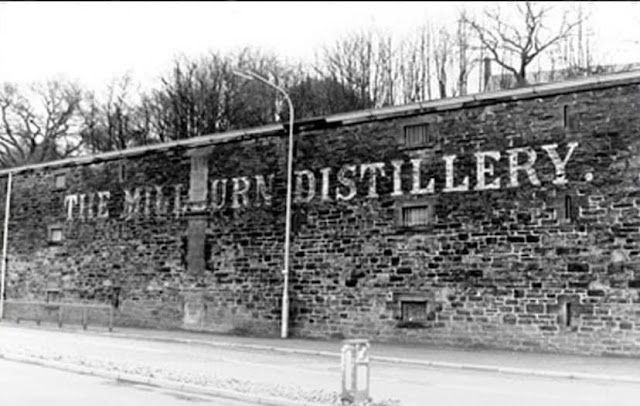Maps
Maps are wonderful things, harbourers of detail and changes over the generations.
To trace the origins and changes at the Millburn site, we've reached back as far as possible to document and trace all things about this area. We're kicking off in 1832, as this is the first map of note (so far) for the area. There are others that focus on Inverness itself and fail to show in any detail, the surrounding settlements. Others, annoyingly, are damaged or incomplete, but we do have a strong selection below to consider.
1832
A very early pre-distillery snapshot of the Millburn area. You can see the landmark of the Mill Burn (or river) on this map from the NLS, which is called Great Reform Act Plans and Reforms.
Interestingly, this shows the burn as splitting and this is certainly evident if you visit the distillery site today, as there is a burn flowing under the major road beside the distillery, while it is lost on the current map finding tool. In fact, the burn vanishes and is lost until it reappears on the other side of the road. Reflecting the sheer level of construction that we're about to follow in the coming decades.
You can also see a couple of buildings already appearing in the vicinity of the distillery site.
1867
A dramatic change is already evident in this survey, which shows Millburn as a hive of activity and the establishment of the Highland Railway line just to the north of the site.
Using the handy zoom function, we can focus on the area that we're really interested in seeing. I've coloured in the burn, so we can appreciate the landmark and we can now see the formation of Millburn Mills Corn & Flour, as an early forerunner of the distillery. This is backed up by existing research that suggests David Rose (a local corn merchant) took on the premises in 1853, and there were several mills in the area.
1868
Just shortly after our previous survey, we have this technicolour map that was published in 1870. The detail here is much clearer and we appreciate that the burn split looks like it is being harnessed for a waterwheel to drive the mill on-site.
What we should see in subsequent maps is the renovation of the site as a much larger set of buildings is established circa 1876, as it changes from a flour mill to a distillery.
1870
This survey map of the mainland area, shows that no changes were evident in the early 1870s at the site, confirming the accuracy so far of published work.
1873
Taking us even closer to the speculated date of the transformation of the site, this survey was documented between 1873-1875 and published later in the decade. Showing the mill in its original form, but for how much longer?
1902
Sadly, we're denied maps (at the time of writing) that show the immediate evolution of the site. This survey from the turn of the century, shows the expansion and larger buildings, but annoying, is at bottom of the map.
1903
Published shortly afterwards, this survey, shows little difference but is slightly clearer.
1929
Here is a map actually published in 1930, from the National Library of Scotland that outlines some of the distillery, right on the upper edge of the page.














Comments
Post a Comment